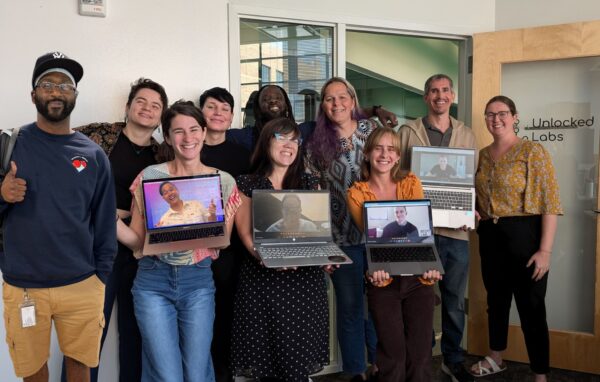In today’s connected world, there are more opportunities than ever to grow a company across national borders. However, expansion requires knowledge and skills beyond those of building a startup in its initial phases, especially when differences in language and culture are involved.
Here at CIC, we’ve always operated according to the belief that entrepreneurs shouldn’t have to go it alone. Access to the insights and connections of a startup community increases one’s chances of success and speeds up the growth process. So for this post, we’ve collected advice from experts in our own innovation network, all of whom are serving as mentors in the Global Acceleration Hub, an acceleration program run by CIC and sponsored by the Japan External Trade Organization (JETRO) for Japanese companies exploring business opportunities in the United States.
6 Tips for Expanding Your Startup Into New International Markets
Below, five startup mentors share their top tips for successfully entering markets abroad.
1. Seek to understand local standards and expectations
Taking time to understand the place you’re looking to expand to is vital — from the way business is conducted to broader cultural norms. “While many basic underlying fundamentals remain the same between geographic ecosystems, there can be significant differences at the strategy and executional levels,” says David Saxner, who has led business development for multiple international life science companies. “Being open to conducting new strategic assessments or presenting your information in a new way will improve your probability of success.”
An important part of learning how to conduct business in a new ecosystem, according to Saxner, is understanding what information companies, investors, and potential partners will expect you to share, and how they approach assessing companies and their technologies. Yes, do your own research, but also “meet people and listen,” he says. “Pay attention not only to what they ask you about but also to how they respond to you sharing information, their areas of focus, and their mindsets behind how they approach assessing your technology and company.”
To get the most out of this process, Saxner recommends going into meetings with a second person from your team whose primary objective is to listen and assess. “Especially when there are cultural differences, it is unlikely that you will catch everything,” he says. “Try to get as much as you can and use that information to modify your approach for that ecosystem.”
2. Get to know existing market players and opportunities
In addition to familiarizing yourself with the norms and expectations in a new business landscape, understanding the existing landscape of players and products will help you to identify areas of opportunity for your startup. “Look to see what technologies are already out there,” says Kerianne Panos, Founder of MCML Consulting Services. “You might find an unmet need, which is great. You might also be able to see how your idea would fit into the existing landscape.”
Similarly, Panos suggests scoping out the local scene to see what kind of support is available for growing startups: “For example, there are places like CIC and organizations like MassChallenge. There are a lot more online programs now aimed at supporting entrepreneurs and small businesses. And you have amazing business figures and organizations launching entrepreneur bootcamps for free. Take advantage of it!”
3. Build relationships within your target companies
Having an advocate or guide inside your target company can be a game-changer. Danielle D. Duplin, Cofounder and Global Directory of AGENCY at CIC and coach at Free Wind Productions, suggests identifying “champions” who can help you navigate their organizational structure and support your efforts. This doesn’t necessarily have to be someone at the top; the key is to connect with relevant influencers within the company who believe in what you are building.
“Try to meet KOLs (Key Opinion Leaders) who are on the speaking circuit at industry conferences on behalf of their organization. It is likely that part of their public outreach is to be receptive to newcomers who have innovative ideas, and while they may not be the ultimate decision-maker, they can help make thoughtful and enthusiastic introductions to their colleagues,” Duplin says.
Another way to get your foot in the door is through larger enterprises’ internal innovation labs, “who will help evaluate your solution on its merits, as well as the feasibility of integrating your new solution into their existing, and likely complex, infrastructure,” explains Duplin. “Many startups with great products will be passed over if the operational requirements prove to be too big or not worth the effort, so it is important to understand the full picture and risk profile of the target organization from many levels. Indeed, top-down decisions do ultimately get implemented, but bottom-up buy-in is sometimes the path to get there.”
4. Look for mentorship
We’ve already discussed a few of the powerful ways that relationships can support your internationalization efforts. Another approach with this is mentorship. You might seek out mentorship through a specific individual, or you might look for a startup program that includes the element of mentorship in its curriculum and resources. This is the model we use with the JETRO Global Acceleration Hub at CIC, where the experts behind these tips act as mentors.
“Mentors often have deep industry experience and can provide advice on culture, communication, and establishing relationships,” says independent scientific consultant Ester Caffarel-Salvador. A mentor can provide guidance around potential pitfalls and misunderstandings, and “they can also be a sounding board for important decisions,” she says.
Of course, mentorship isn’t a silver bullet. Caffarel-Salvador cites the importance of doing research on the local market, culture, and regulatory environment. But one of the major benefits of knowledgeable, locally-rooted mentors is that they can help to facilitate connections with key stakeholders in the ecosystem, “which can be extremely challenging if [you] don’t already have an established network in the region,” she says.
5. Tailor your communication to your audience
Whether you’re sending an email or crafting a deck, it’s important to speak in terms that your audience can easily absorb. That can admittedly be tricky when language barriers or cultural differences come into play.
“It is important that a startup uses the same language as its audience (investors or other stakeholders) to pitch their technology,” Caffarel-Salvador says. When preparing presentations, consider structure, symbols, and methods of communicating information. After all, norms around communication differ from place to place. Caffarel-Salvador recalls a meeting with a startup where they presented a slide using triangles, circles, and squares to define the rate of success of an event. This is, she says, “apparently well-known in Japan, but I had never seen that before.”
Meanwhile, precision and impact in communication is key. “You need to be persuasive. You need to influence people to act,” and that’s done differently across languages, explains Kerianne Panos. She suggests getting support in crafting messages. “Find someone like me to look it over, talk you through it, make sure that you have all the pieces together. You only get a minute or two of someone’s time when you send an email. In that time, you want the person to make a decision to follow up with you. Make those two minutes count!”
6. Prepare, prepare, prepare to meet investors
Before approaching investors, there’s homework to be done. “It’s a bit like a job interview,” says Keiko Schlabach, Founder and English Communication Coach at English-Empowered. “You would not walk into an interview without knowing anything about the company you are applying for. Do your research about the VC before you meet with them. Visit their website and read their mission statements. See if you are striving for the same mission.”
Beyond getting to know an investor’s business approach, Schlabach encourages startups to learn about the investors on an individual level if possible. “If you know who you are meeting with, research their background and see if you have anything in common, or if they’ve made any notable accomplishments you could comment on,” she suggests. “When you touch on these points in the meetings and tailor your presentations to each VC, you will more likely be able to build positive relationships.”
Getting Ready to Grow Your Startup Internationally
Throughout this post, we’ve explored ways that you can better prepare to expand your venture into new international markets. Ultimately, doing your research and forming professional connections with people in your industry and target market will go a long way in setting you up for success.
Gearing up to go international with your startup may require rethinking the ways you approach your work and learning new skills along the way, but the right growth opportunities will be well worth the effort.
Are you a Boston-based startup looking to explore opportunities in Japan or a Japanese startup interested in entering the US market?
Send us an email to learn about opportunities with CIC Japan Desk, which bridges Boston and Japan’s innovation ecosystems with bootcamps, events, and hands-on resources for growth-minded businesses.







